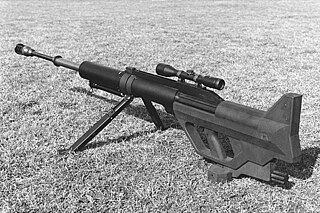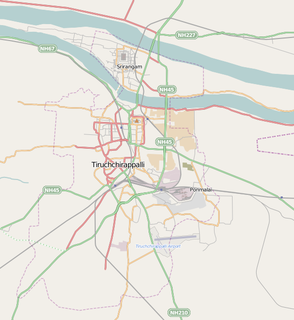
A kinetic energy penetrator is a type of ammunition designed to penetrate vehicle armour using a flechette-like, high-sectional density projectile. Like a bullet, this type of ammunition does not contain explosive payloads and uses purely kinetic energy to penetrate the target. Modern KEP munitions are typically of the armour-piercing fin-stabilized discarding sabot (APFSDS) type.

Armor-piercing ammunition (AP) is a type of projectile designed to penetrate either body armor or vehicle armor.

Terminal ballistics is a sub-field of ballistics concerned with the behavior and effects of a projectile when it hits and transfers its energy to a target.

High-explosive anti-tank (HEAT) is a type of shaped charge explosive that uses the Munroe effect to penetrate heavy armor. The warhead functions by having an explosive charge collapse a metal liner inside the warhead into a high-velocity superplastic jet; this superplastic jet is capable of penetrating armor steel to a depth of seven or more times the diameter of the charge. The jet's effect is purely kinetic in nature; the round has no explosive or incendiary effect on the target.

A shell is a payload-carrying projectile that, as opposed to a solid round shot, contains an explosive, incendiary, or other chemical filling, though modern usage sometimes includes large solid kinetic projectiles properly termed shot. Solid shot may contain a pyrotechnic compound if a tracer or spotting charge is used. Originally it was called a bombshell, but "shell" has come to be unambiguous in a military context.

An anti-personnel weapon is a weapon primarily used to maim or kill infantry and other personnel not behind armor, as opposed to attacking structures or vehicles, or hunting game. The development of defensive fortification and combat vehicles gave rise to weapons designed specifically to attack them, and thus a need to distinguish between those systems and ones intended to attack people. For instance, an anti-personnel landmine will explode into small and sharp splinters that tear flesh but have little effect on metal surfaces, while anti-tank mines have considerably different design, using much more explosive power to effect damage to armored fighting vehicles, or use explosively formed penetrators to punch through armor plating.

An anti-materiel rifle (AMR) is a rifle designed for use against military equipment (materiel), rather than against humans ("anti-personnel").

A sabot is a supportive device used in firearm/artillery ammunitions to fit/patch around a projectile, such as a bullet/slug or a flechette-like projectile, and keep it aligned in the center of the barrel when fired. It allows a narrower projectile with high sectional density to be fired through a barrel of much larger bore diameter with maximal accelerative transfer of kinetic energy. After leaving the muzzle, the sabot typically separates from the projectile in flight, diverting only a very small portion of the overall kinetic energy.

The Steyr IWS 2000 is an Austrian single-shot bolt-action anti-materiel rifle produced by Steyr Mannlicher. IWS stands for Infantry Weapon System. Like many anti-tank rifles, it is actually a smoothbore weapon and not a true rifle. This can help accelerate projectiles and increase ballistic effectiveness, but the lack of rifling imparting inertial stability requires the projectile to have stabilizing fins. It fires a 15.2×169 mm armor-piercing fin-stabilized discarding-sabot round, and is the first man-portable rifle to use this type of ammunition.

Armour-piercing discarding sabot (APDS) is a type of spin-stabilized kinetic energy projectile for anti-armour warfare. It consists of a sub-caliber round outfitted with a sabot to increase velocity compared to a full caliber round by firing a smaller lighter projectile from a relatively larger propellant-charge. The higher velocity gives the round increased penetration against armour. To not break at high speed impacts, APDS rounds traditionally features a hardened core made by tungsten or other hard material.

A tank gun is the main armament of a tank. Modern tank guns are large-caliber high-velocity guns, capable of firing kinetic energy penetrators, high explosive anti-tank, and cannon-launched guided projectiles. Anti-aircraft guns can also be mounted to tanks.

Armor-piercing bullets for rifle and handgun cartridges are designed to penetrate ballistic armor and protective shields intended to stop or deflect conventional bullets. Although bullet design is an important factor with regard to armor penetration, the ability of any given projectile to penetrate ballistic armor increases with increasing velocity. Rifle cartridges typically discharge bullets at higher muzzle velocity than handgun cartridges due to larger propellant charge. However, even the same cartridge fired from a rifle will, in almost all common cases, have a higher velocity than when fired from a handgun. This is due to the longer period of acceleration available within the longer gun barrel of rifles, which allow adequate time for the propellant to fully ignite before the projectile exits the barrel. For this reason, bullets fired from rifles may be more capable of piercing armor than similar or identical bullets fired from handguns. In addition, a small-caliber bullet has higher sectional density than a larger-caliber bullet of the same weight, and thus more capable of defeating body armor.

The 14.5×114mm is a heavy machine gun and anti-materiel rifle cartridge used by the Soviet Union, the former Warsaw Pact, modern Russia, and other countries.

Thiruverumbur is a neighbourhood in the city of Tiruchirapalli in the Indian state of Tamil Nadu. It was merged with the Tiruchirappalli Corporation in 2011.

Armour-piercing fin-stabilized discarding sabot (APFSDS), long dart penetrator, or simply dart ammunition, is a type of kinetic energy penetrator ammunition used to attack modern vehicle armour. As an armament for main battle tanks, it succeeds Armour-Piercing Discarding Sabot (APDS) ammunition, which is still used in small or medium caliber weapon systems.
Ordnance Factory Board (OFB), consisting of the Indian Ordnance Factories, now known as Directorate of Ordnance was an organisation, under the Department of Defence Production (DDP) of Ministry of Defence (MoD), Government of India. The 41 Indian Ordnance Factories have been converted into 7 Defence Public Sector Undertakings (DPSUs).

Ammunition is the material fired, scattered, dropped or detonated from any weapon or weapon system. Ammunition is both expendable weapons and the component parts of other weapons that create the effect on a target. Nearly all mechanical weapons require some form of ammunition to operate.

The economy of Tiruchirappalli is mainly industrial. The factories of Ordnance Factories Board such as Ordnance Factory Tiruchirappalli and Heavy Alloy Penetrator Project. Bharat Heavy Electricals Limited (BHEL), and Golden Rock Railway Workshop are located in Tiruchirappalli. Due to the presence of boiler manufacturing units BHEL and Cethar Vessels, Tiruchirappalli is also known as the "Boiler capital of India".

Ordnance Factory Tiruchirappalli (OFT), also called Ordnance Factory Trichy, is a small arms factory operated by Advanced Weapons and Equipment India Limited based in Tiruchirappalli, Tamil Nadu, which was previously part of Ordnance Factory Board of the Ministry of Defence, Government of India. The company is headed only by an IOFS officer called General Manager who is the Chief Executive Officer, responsible for the overall management of the company. OFT is the largest small arms manufacturing company of India and has the most varied range.

Munitions India Limited (MIL) is an Indian state-owned defence company, headquartered in Pune, India established in 2021 as part of the restructuring and corporatisation of the Ordnance Factory Board into seven different Public Sector Undertakings. Munitions India primarily manufactures ammunition, explosives, rockets and bombs for the use of the Indian Armed Forces, foreign militaries and domestic civilian use.



















